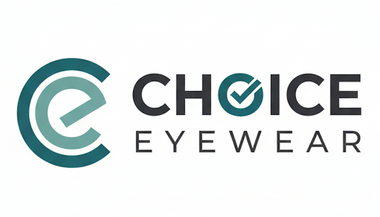How to Choose the Right Lenses for Your Vision and Lifestyle
Once you’ve found the perfect frames, the next step is just as important—customizing your lenses. From prescription type to lens color and thickness, the right choices can dramatically improve your comfort, clarity, and confidence.
Here’s what you’ll need to consider:
1️⃣ Prescription Types
Your lens type should match how you use your glasses. Here are the main options:
Single Vision
Designed to correct either nearsightedness or farsightedness, not both.
-
Distance – For driving, watching TV, or seeing far away
-
Reading – For close-up tasks like reading or phone use
✔️ Most common option for everyday wear

Bifocals
For people who need both distance and reading correction in one lens.
-
Flat Top (D-Shape) – A visible horizontal line, shaped like an upside-down D
-
Round Top – A circular reading segment near the bottom
🧐 You’ll see the line where the two prescriptions meet.

Progressives (No-Line Bifocals)
These lenses offer a smooth transition between distance, intermediate, and reading zones—with no visible line.
-
Stylish and functional
-
Takes a little getting used to, but more comfortable than bifocals
-
Great for all-day wear
✨ The most modern and popular choice for multifocal users

2️⃣ Lens Color & Tints
Whether you prefer clear lenses or sun protection, you have several options:
Clear Lenses
-
Standard lenses with no tint
-
Great for indoor and general everyday use

Photochromic (Transition) Lenses
-
Clear indoors, darken in sunlight
-
Ideal for people moving between inside and outside throughout the day
-
Includes UV protection

Tinted Lenses
-
Permanently colored lenses for sun protection or style
Options include:
-
Solid Tint: One consistent color
-
Gradient Tint: Darker on top, lighter on bottom
-
Polarized Tint: Reduces glare—ideal for outdoor use and driving
🌞 Want to reduce eye strain in bright light? Go for polarized lenses.

3. Lens Index
Standard 1.56 Index:

The default lens thickness.
- Single Vision lenses: Included for free
- Bifocal lenses: $22
- Progressive lenses: $60
Polycarbonate (Impact 1.58 Index):

Thinner and stronger, required for rimless frames.
Thin 1.61 Index:

Thinner than the standard 1.56 index.
Thinner 1.67 Index:

Even thinner than the 1.61 index.
Thinnest 1.74 Index:

Our thinnest option, available for certain prescriptions. Please contact us for more info.


